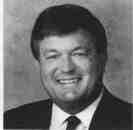 |
Home | Search | Browse | About IPO | Staff | Links |
 |
Home | Search | Browse | About IPO | Staff | Links |
|
Illinois Parks & Recreation May/June 1995 • Volume 26, Number 3 ACROSS THE BOARD The Board President 
by Dr. Ted Flickinger, CLP IAPD Executive Director The leader can be led. He is not interested in having his own way, but in finding the best way. What does it take to be a good board president? What criteria do the board members use in selecting the president? For example, is the individual a good leader? Will the person look at this as a responsibility and an obligation, or will the individual take advantage of the powers of this position? Is the member organized? Does the individual know Robert's Rules and Parliamentary Procedures? Has the individual been associated with the agency long enough to know its goals and objectives? Does the individual have a hidden agenda or represent a special interest group? Use the criteria as guidelines, but remember that no board member is perfect and has all the qualifications.
How Much Power Will Your Board President Have?
What Do You Expect from the President? 1. Serve as the agency's spokesperson and also as a sounding board in the community. 2. Assist the chief executive in preparing the board meeting agenda. The president will generally allow the chief executive to develop the agenda but will provide input for the agenda and review it before the board meeting. 3. Blend a business-like manner with a congenial and cooperative atmosphere at all board meetings. The president starts the meeting on time, follows the agenda, speaks clearly, and insists on courtesy for all members. 4. Preside at all board and executive committee meetings. The president keeps the business flowing, diplomatically guards against wasting time, knows the issues, and leads the board to effective decisions. If a board member gets bogged down in trivial matters, the president intervenes by saying, "We will leave the details of this 6* Illinois Parks & Recreation* May/June 1995 matter to the chief executive, the person whom we've hired to solve the problems." The president obtains motions as soon as possible and focuses discussion on a central theme. As Don Bresnan, a renowned board member for the Champaign Park District, once said, "We don't want to approve the minutes and waste the hours." 5. Try to include all board members in the discussions, especially those with minority views. The president serves as the moderator when disagreements arise. 6. Try to avoid closely contested actions for board decisions. If the votes appear to be even, the president should consider postponing action for the next meeting. Or the president may appoint an ad hoc committee representing both points of view to study the matter and make a recommendation for a mutually acceptable solution. 7. Summarize the discussion on an issue for the record, and state the motion correctly prior to calling for a vote by the board. 8. Sign authorized contracts. 9. Appoint all committees subject to board confirmation. Serve as an ex-officio member on all board commit- tees. The president attends as many committee meetings as possible to become familiar with an issue but does not preempt the committee chairman. The president is a visitor at committee meetings. 10. Give directions to the chief executive. The president has no independent authority to influence the chief executive; advice is unofficial and lacks vested authority. It is the president's task to administer the board, and the chief executive's task to administer the agency. Interested in learning more about board responsibilities? IAPD has two publications available as excellent resources — Are You On Board? A Leadership Guide for Agency Executives and Board Members and The Park Commissioners Handbook. Contact IAPD at (217) 523-4554 for more information.* Illinois Parks & Recreation* May/June 1995 | 7 |
|
Sam S. Manivong, Illinois Periodicals Online Coordinator |